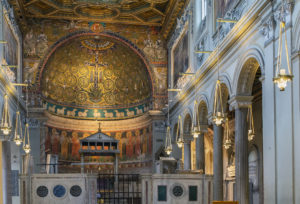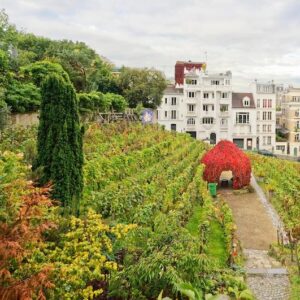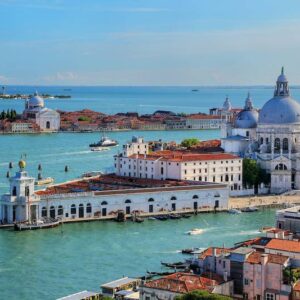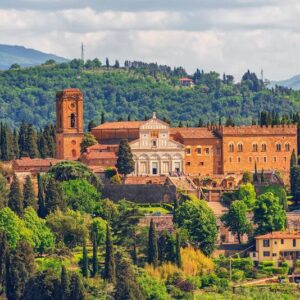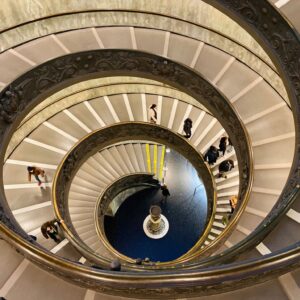Let’s continue our journey to explore the districts of Rome. In this article, following our discussions on the Trastevere District and the Trevi District, we will delve into the smallest of the 22 districts that make up the core of the Eternal City: the Sant’Angelo District. Bordered by the Tiber River and the area now known as Piazza Venezia, Sant’Angelo is a treasure trove of history, tradition, and architecture. Are you ready to explore all it has to offer? Happy reading!
Ancient Origins
The roots of the Sant’Angelo District reach back to ancient Rome. The area was already inhabited during the Republican era, as evidenced by archaeological remains of buildings and structures dating back to the 3rd century BC. During the Roman Empire, Sant’Angelo was a bustling commercial and residential hub, home to numerous temples and markets.
One of the most significant structures from Roman times is the Theatre of Marcellus, begun by Julius Caesar and completed by Emperor Augustus in 13 BC. This theatre, capable of seating up to 20,000 spectators, is still visible today and remains a landmark of the district.
The Middle Ages and the Jewish Ghetto
During the Middle Ages, the Sant’Angelo District became a center of religious and civic life. In 1555, Pope Paul IV established the Roman Jewish Ghetto, confining the city’s Jewish population to a well-defined area within the district. This decision had a profound impact on the Jewish community, which lived under extreme poverty and severe discrimination. Despite these challenges, the Jewish Ghetto developed a vibrant culture and tradition. The Great Synagogue of Rome, built in 1904 after the ghetto walls were demolished, stands as one of the most important symbols of Jewish presence in the district. Today, the Jewish Ghetto is a fascinating area to explore, rich in history, culture, and culinary delights such as the famous carciofi alla giudia (Jewish-style artichokes).
The Renaissance and Baroque Periods
During the Renaissance, Sant’Angelo underwent significant changes, with the construction of numerous noble palaces and churches. The powerful Savelli family built their residence in the district, incorporating the Theatre of Marcellus and transforming it into a fortress. Other noble families, such as the Mattei, contributed to the architectural and cultural development of the district by constructing splendid palaces and gardens.
In the Baroque period, many of the district’s churches were adorned with lavish frescoes and sculptures. Among them, the Church of Sant’Angelo in Pescheria, dedicated to the Archangel Michael, is particularly noteworthy. Located near the Portico of Octavia, the church stands on the site of an ancient fish market, from which it derives its name.
The 19th and 20th Centuries
With the unification of Italy and the end of the Papal States, the Sant’Angelo District underwent significant urban changes. Many old medieval structures were demolished to make way for new buildings and modern infrastructure. However, the district managed to preserve much of its historical identity and unique atmosphere.
A tragic event marked the district during World War II: in 1943, during the Nazi occupation of Rome, over 1,000 Roman Jews were deported from the Jewish Ghetto to concentration camps. A memorial near the Great Synagogue commemorates this painful chapter in the district’s history.
Sant’Angelo Today
Today, the Sant’Angelo District is a vibrant and captivating neighborhood that attracts visitors from around the world. Its narrow, winding streets, historic buildings, and picturesque squares offer a unique and authentic atmosphere. As you stroll through the district, you can admire the remnants of ancient Rome, uncover traces of Jewish history, and savor the culinary delights of Roman and Jewish-Roman cuisine.
The Theatre of Marcellus, the Great Synagogue, the Portico of Octavia, and the Turtle Fountain are just some of the attractions that make Sant’Angelo a must-visit destination for those seeking the most authentic side of Rome. Moreover, the district hosts numerous cultural events and festivals that celebrate its rich history and traditions.
Conclusion
The Sant’Angelo District is a true gem in the heart of Rome, where the past and present intertwine in a fascinating mosaic of history, culture, and tradition. Exploring this district means immersing yourself in centuries of history, discovering the deep roots of the city, and experiencing an immersive and unforgettable journey. If you find yourself in Rome, don’t miss the chance to visit the Sant’Angelo District and let yourself be enchanted by its wonders.


